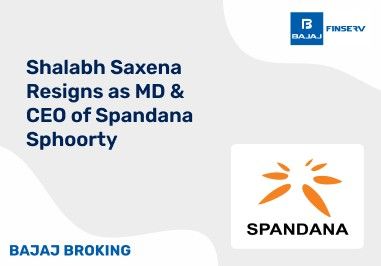BAJAJ BROKING
Tankup Engineers IPO is Open!
Open a Free Demat Account
Trade Now, Pay Later with up to 4x
Track Market Movers Instantly
What is Alphabet Stock?
Although the U.S. stock market works similarly to the Indian stock market, there are plenty of differences. For instance, the Indian stock market has only two classes of common stock – regular equity shares and equity shares with differential voting rights (DVR). The U.S. stock market, on the other hand, has many different classes of equity shares. Market experts collectively refer to the various equity share classes as alphabet stock. Understanding the concept of alphabet stock is crucial if you’re interested in investing in the U.S. stock market.
What is Alphabet Stock?
Alphabet stock refers to the various classes of equity shares of a publicly listed company in the U.S. Companies with multiple equity share classes often assign alphabets to each class to differentiate it from one another. This led market experts to coin the term ‘alphabet stock’ to refer to the different equity share classes collectively.
Understanding Alphabet Stock
Generally, companies that issue alphabet stock have differential dividends and voting rights for each common stock class. For instance, let’s say there’s a company named XYZ Inc., offering two different classes of equity shares. It assigns the alphabets A and B to differentiate between the two classes.
Now, Class A shares of XYZ Inc. are bestowed with all the rights of a common stock. Class B shares, however, only have the right to claim dividends and have no voting rights. Since the company has two classes of common stock, the stock symbol would be XYZ.A and XYZ.B.
If XYZ Inc. wishes to issue equity shares with normal voting rights but no dividend rights, it could issue a new class of shares and classify them as Class C shares. The stock symbol for this third class of shares would be XYZ.C. Such classification helps shareholders easily differentiate between the two share classes.
That’s not all. Publicly listed U.S. parent companies with subsidiaries may also issue alphabet stock. In this case, each class of equity shares would be tied to a specific subsidiary of the parent company. For example, let’s say there’s a publicly listed parent company named DEF Inc. with four subsidiaries. The company could issue four additional classes of equity shares – A, B, C and D each tied to one of its subsidiaries. In this case, the stock symbol for the parent company would be DEF and that of its subsidiaries would be DEF.A, DEF.B, DEF.C and DEF.D.
Alphabet Stock – A Real-World Example
Now that you have a good understanding of what alphabet stock is, let’s look at a real-world example.
In 2015, Google reorganised itself and its many subsidiaries by creating a parent company named Alphabet Inc. Alphabet Inc. became a publicly listed holding company with Google and an extensive set of other companies as its subsidiaries. As part of this restructuring process, Alphabet Inc. issued three classes of common stock – Class A, Class B and Class C shares – each with its own set of rights. Here’s a closer look.
Class A Shares: These shares represent the regular equity shares of Alphabet Inc. Class A shareholders get one vote per share and are entitled to dividends. Listed on NASDAQ under the ticker symbol – GOOGL, investors can freely trade Class A shares of Alphabet Inc.
Class B Shares: These shares represent the equity shares of Alphabet Inc. held by insiders, promoters and top executives. Unlike Class A shares, Class B shares are not listed on an exchange and cannot be bought by regular investors. Furthermore, Class B shareholders get more voting power (10 votes per share) and are entitled to dividends.
Class C Shares: These shares represent equity shares of Alphabet Inc. without voting rights. Class C shares are also listed on NASDAQ under the ticker symbol GOOG and can be freely traded by regular investors. Since Class C shares have no voting rights, they don’t dilute the ownership of Class A and Class B shareholders.
Also read: What are Voting Shares?
Why Do Companies Issue Alphabet Stock?
There are many reasons why companies might want to issue different classes of common stock. Here’s a quick overview of some of them.
- Founders and key shareholders can retain control over the company by issuing an additional class of shares with lower voting rights.
- Companies can raise capital without worrying about diluting the ownership of their existing shareholders.
- Companies can protect themselves from hostile takeover bids from outsiders by issuing multiple classes of common stock.
Also Read: What is a Share Certificate?
Conclusion
Now that you know what alphabet stock is, here’s something that you should be aware of. Companies that issue multiple classes of common stock have complete freedom to decide on the type and extent of rights each class is entitled to.
For instance, Class B shares may have more voting power than Class A shares or vice versa. Therefore, if you’re planning to invest in a U.S.-based company that has issued various classes of common stock, make sure to check the rights for each class before investing.
Share this article:
Read More Blogs
Our Secure Trading Platforms
Level up your stock market experience: Download the Bajaj Broking App for effortless investing and trading













